Interview: Rahul Mishra’s AFEW SS26 Spins Modest Madras Checks Into A New Era Of Luxury
From being worn by fishermen and farmers in India’s Southern Coast to royals and elites, Rahul Mishra’s new drop brings a ‘fresh’ perspective on the simple home-spun Madras Checks, re-imagined into ready-to-wear pieces
When ace designer Rahul Mishra was looking for inspiration for his ready-to-wear brand AFEW’s SS26 collection, he wanted something that’s global yet rooted in Indianness. Something that’s fresh yet familiar. A fabric that bears the imprints of human artistry yet can evolve with time for the modern wearer. Mishra found all the answers in the 12th-century Madras Checks of Tamil Nadu and wove them into his new drop ‘Fresh’, recently unveiled in Dubai worn by Nora Fatehi. The collection celebrates this centuries old fabric adopted by all, from the everyday wearer to the aesthete, making it truly democratic.
The fabric of everyday life
Mishra wished to reinterpret the checks in a way that feels “universally modern” but also “respectful” of where it comes from. “The checks fascinate me for their honesty,” he begins in our interview, adding, “Madras Checks have draped generations across India with a bold, distinctive visual language. They appear in lungis, sarongs, sarees, and gamchas that belong to the streets, homes, and fields. At the same time, they travelled the world through trade and became an emblem of summer dressing in Western fashion. This duality inspires me deeply: something born of simplicity in India, later embraced globally as an icon.”
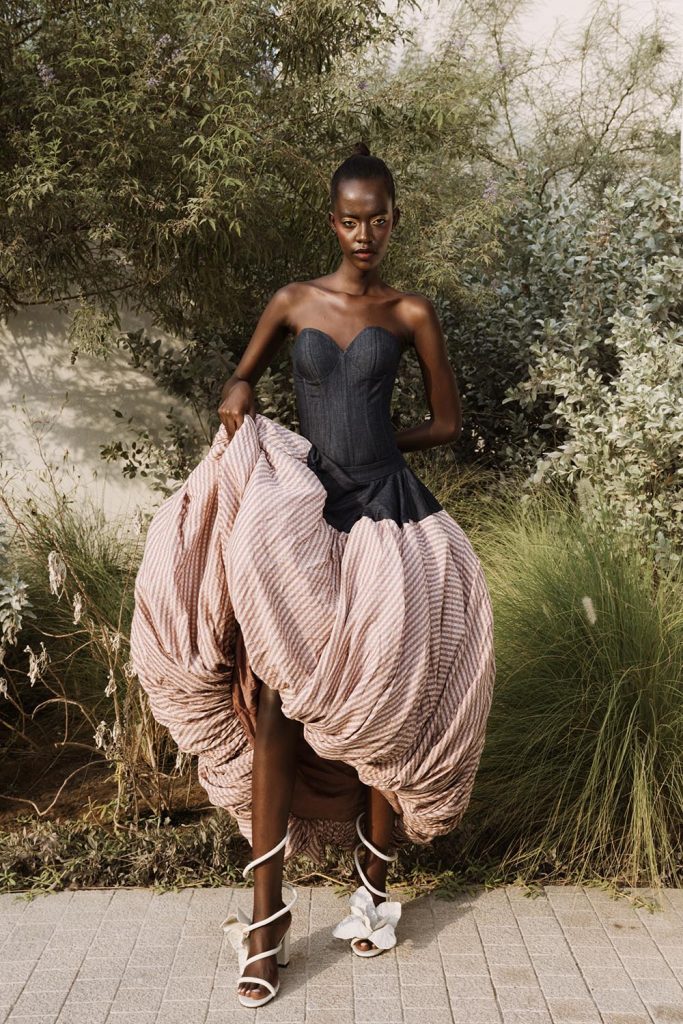
Born in the South Indian coast of the sleepy village of Madrasapattinam, these checks were worn by the humble fishermen and farmers to the royals, merchants, and soldiers in the Southern part of India. By the 17th century, they were traded in Asia, Africa, America, and the Middle East, elevating its global appeal.
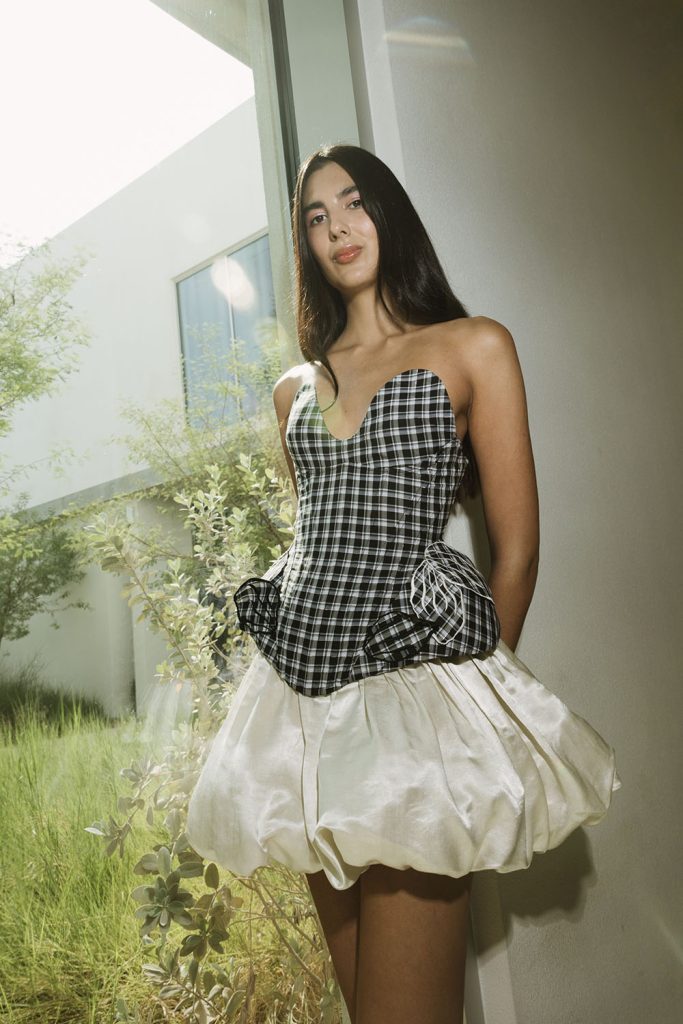
A ‘Fresh’ perspective
Mishra’s Spring/Summer 2026 collection ‘Fresh’ is indeed a breath of fresh air lying at the intersection of this rich history, culture, fashion, innovation, and slow luxury. It’s all summed up in the collection’s name, an acronym for: Familiar, Reimagined, Evolving, Simple, and Human.
The collection is ‘Familiar’, bringing classic silhouettes like T-shirts, shirts, sarees, and bombers crafted from Khadi cottons, muslin, Madras Checks, and organza, where ordinary garments worn at home, work, play, or outings are ‘Reimagined’. Think beyond lungis and gamchhas; they come in contemporary corset tops cut from hand-loomed checks, hoodies with corset seams, T-shirts and sarees adorned with petals, and dragonflies cut from Madras squares, and balloon skirts and short dresses made of these checks. Mishra has also elevated the designs with sequins and silver surfaces in skirts and blazers to accentuate the glam quotient.
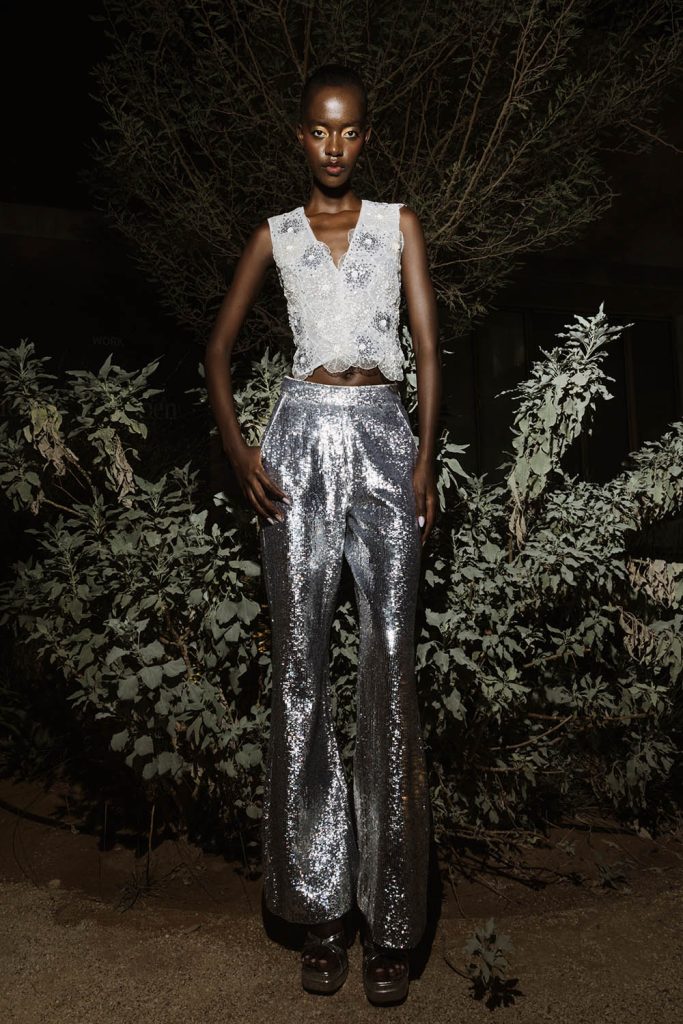
However, the designer reimagines India’s storied fabrics through a fashion-forward lens, not nostalgia. Under his metier, they ‘Evolve’ to become the future of mindful luxury, a cause Mishra has championed with his slow fashion ethos, where many of his pieces have taken 100-plus man-hours to be made. “For me, it is not about nostalgia because textiles like Khadi or muslin are not relics of the past but living, breathing crafts. When we bring them into our collections, it is to highlight how relevant they are for the future of fashion. Their handmade quality, irregular textures, and natural breathability already embody the values of mindful luxury today. By reimagining, we hope to show that going “back to the roots” is really a way of moving forward—to create clothing that is meaningful, sustainable, and deeply connected to human hands,” he tells Outlook Luxe on the aspect of ‘Human’ artistry.
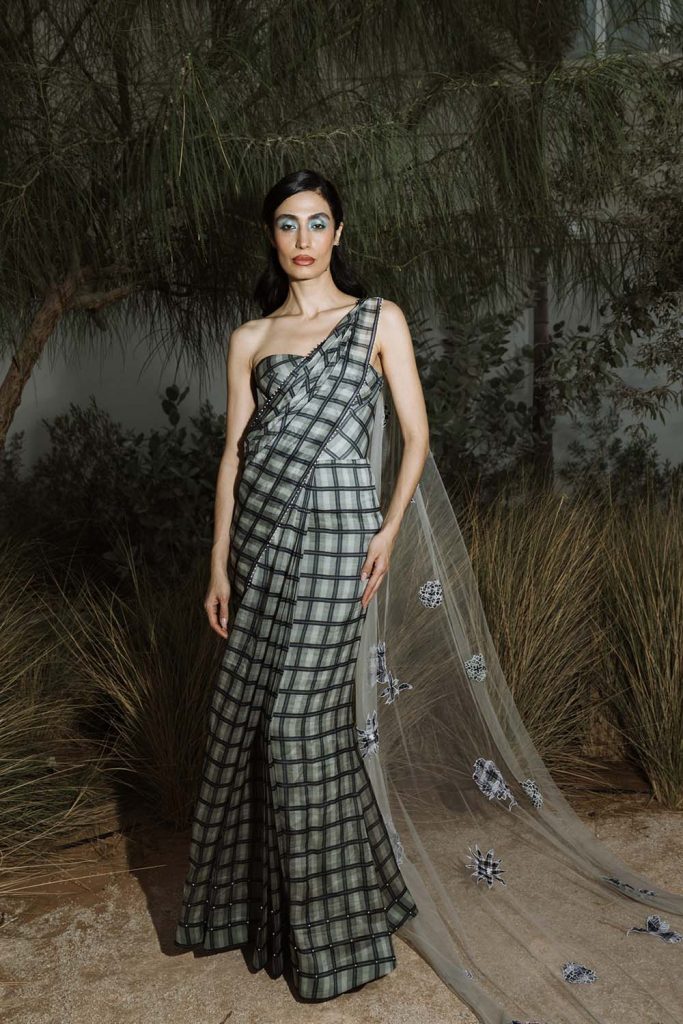
‘Check-list’ for Indian Summers
Madras Checks are a common sighting in South Indian homes specially in summers, as they offer breathability, exuberance in colour palette, and are light-weight. The designer kept it in its truest essence, making it ‘Simple’ in wearability and construction. “The Great Indian Summer is intense. It demands fabrics that can truly breathe. That is why handwoven cottons, muslins, and light silks form the foundation of this collection. Their softness and porous weave allow air to circulate, giving the body ease and comfort. The silhouettes are designed to complement this—volume, where airiness is needed, and light tailoring where structure is desired without adding weight. Even when we introduced denim or metallics, they were kept subtle, as accents rather than heavy layers,” he says.
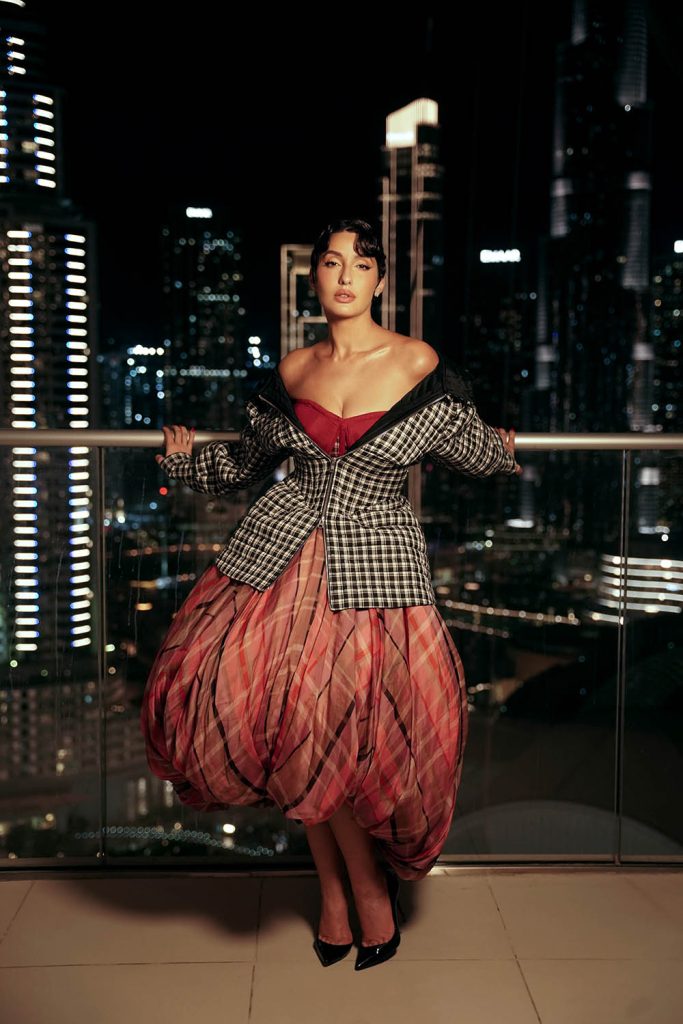
The palette also stays true to the summer season with fresh whites, blues, muted brights, and the natural tones of cotton in the offing. Altogether, the collection is a conversation starter on both age-old craft and modern design.